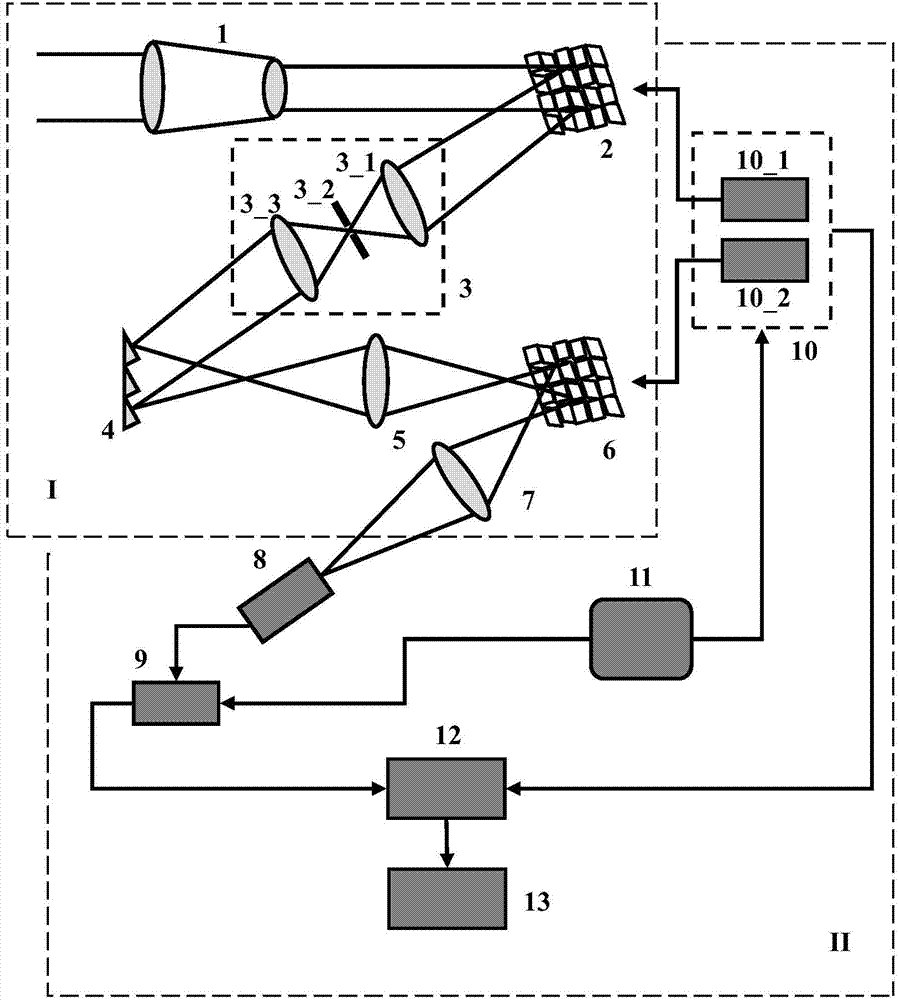Ultra-sensitive spectral imaging astronomical telescope based on second-order compressed sensing and method
An astronomical telescope, compressed sensing technology, applied in telescopes, optics, spectrum surveys, etc., can solve the problem of unable to solve the problem of detection dimensions, the decline of imaging resolution, and the inability to obtain astronomical images and astronomical spectral information at the same time.
- Summary
- Abstract
- Description
- Claims
- Application Information
AI Technical Summary
Problems solved by technology
Method used
Image
Examples
Embodiment Construction
[0066] The present invention will be further described now in conjunction with accompanying drawing.
[0067] The ultra-sensitive spectral imaging astronomical telescope based on second-order compressed sensing of the present invention utilizes the principle of compressed sensing (Compressive Sensing, referred to as CS), which is a brand-new mathematical theory proposed by Donoho, Tao and Candès et al. According to compressed sensing, by randomly sampling the signal, the signal information can be sampled with a sampling number far lower than that required by the Nyquist / Shannon sampling theorem, and the original signal can be perfectly restored through a mathematical algorithm, and it has many advantages. High robustness. Compressed sensing is mainly divided into three steps: compressed sampling, sparse transformation and algorithm reconstruction; among them, compressed sampling refers to the process of sampling a signal with a measurement number less than the number of signal...
PUM
 Login to View More
Login to View More Abstract
Description
Claims
Application Information
 Login to View More
Login to View More - R&D
- Intellectual Property
- Life Sciences
- Materials
- Tech Scout
- Unparalleled Data Quality
- Higher Quality Content
- 60% Fewer Hallucinations
Browse by: Latest US Patents, China's latest patents, Technical Efficacy Thesaurus, Application Domain, Technology Topic, Popular Technical Reports.
© 2025 PatSnap. All rights reserved.Legal|Privacy policy|Modern Slavery Act Transparency Statement|Sitemap|About US| Contact US: help@patsnap.com



